Research activities of the Centre in large involve student participation at various motivational grant programmes as well as organisation of informal seminars and workshops. Students are encouraged to participate at international conferences and to get involved in solving research grants. Students and researchers of the Centre were involved in the following activities in 2023:
In December 2023, Martin Urbanec participated in the Workshop on Gravitational Wave Science in the Czech Republic (GW@CZ) that was held at the Geophysical Institute of the Czech Academy of Sciences, Prague, Czech Republic. The purpose of this workshop was for the various experts in the Czech Republic who could contribute to gravitational-wave science to meet, network, and discuss opportunities to strengthen the Czech contribution to main international gravitational-wave astronomy observatories and related scientific efforts. The workshop was financed by Space for Mankind.
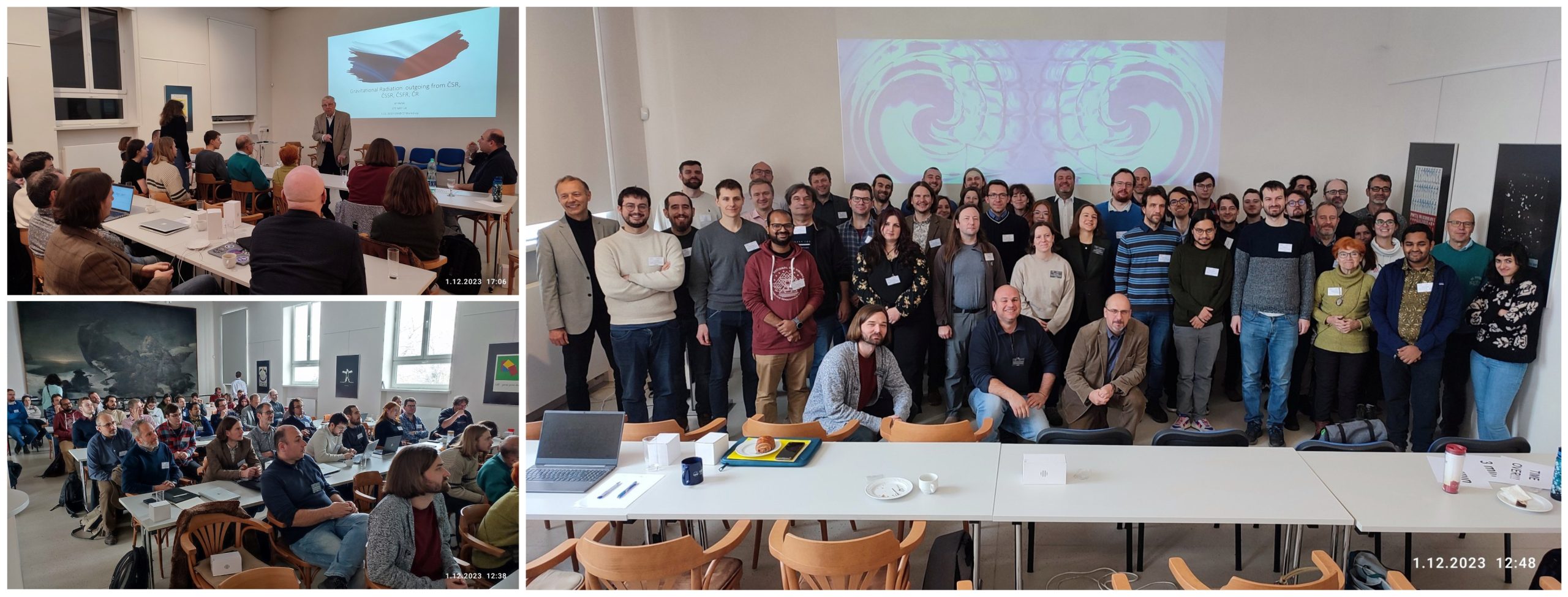
Our Contributions
The series of the annual RAGtime workshops has been organised at the Institute of Physics in Opava by the Relativistic Astrophysics Group (RAG) since 1999. The RAGtime 25 workshop was held in a hybrid mode from November 27 to December 1, 2023 and had more than 60 registered participants.
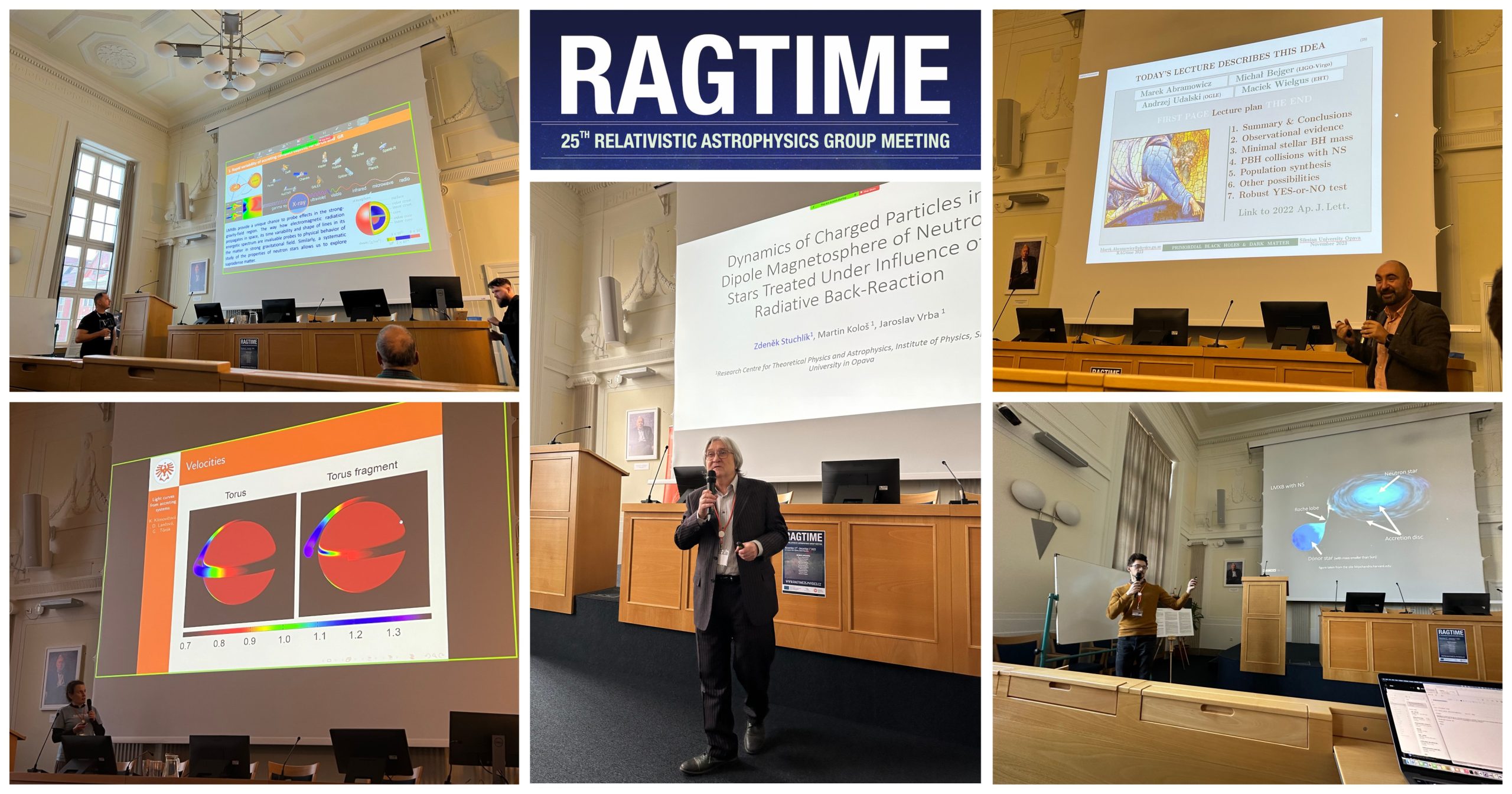
The scientific focus of the workshop was devoted mainly to current problems of relativistic astrophysics, mainly focused on the physics of black holes and neutron stars. Large attention was given to confronting theoretical models with up-to-date observations available through both electromagnetic and gravitational wave windows to the Universe. Special attention was paid to modelling of astrophysical effects in combined strong gravity and relevant external magnetic fields. Current issues in accretion theory were explored, and new methods of generating complex general relativistic solutions containing a black hole were exposed. The participants furthermore attempted to address problems related to cosmology, mathematical aspects of the theory of relativity, and alternative theories of gravity. The workshop also focused on national and international collaboration regarding the present and future cosmic X-ray missions. The workshop was attended by multiple experts in the field and allowed for many valuable discussions and interactions between the participants.
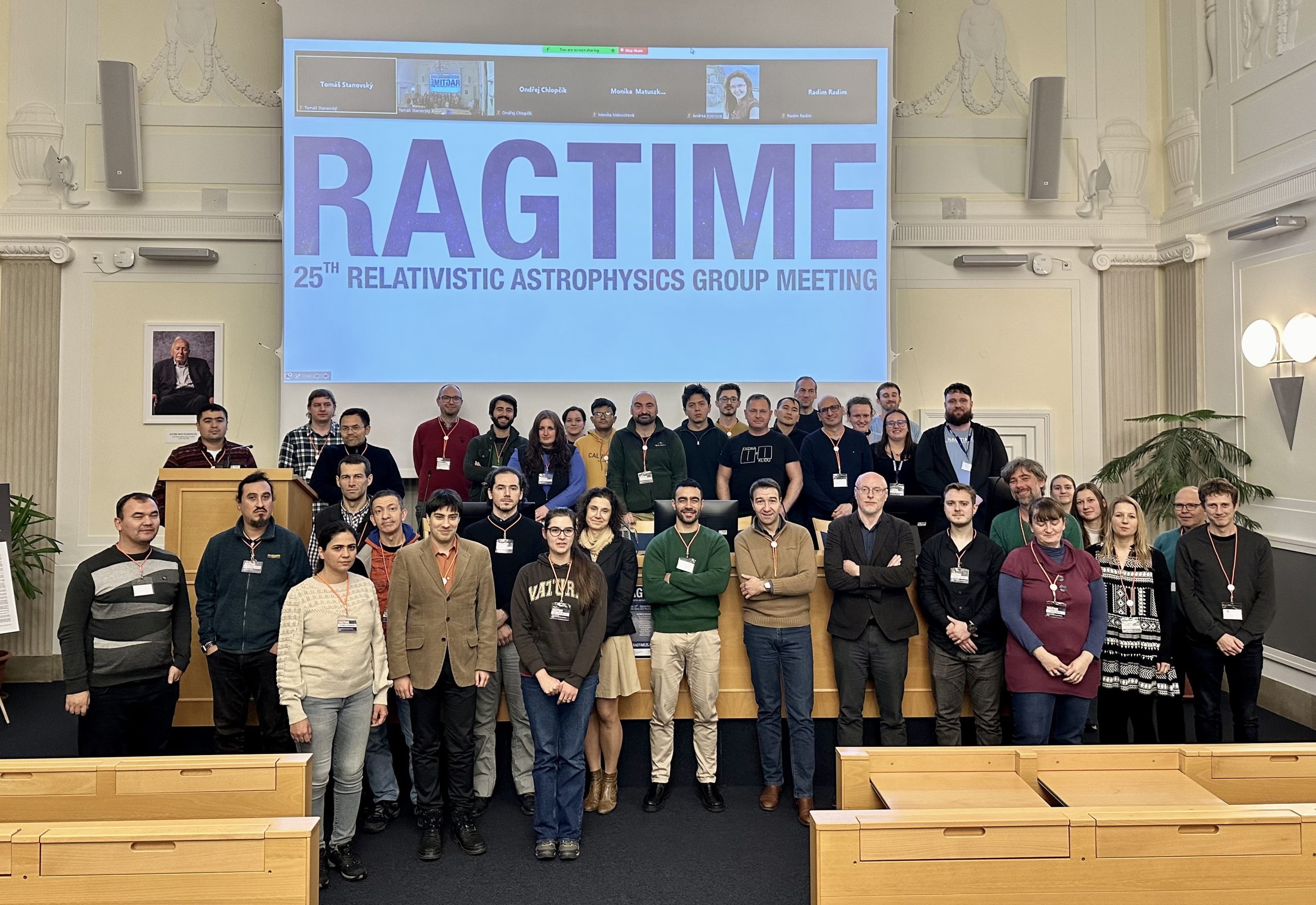
A photo gallery from the RAGtime 25 workshop is available here. The Proceedings of the RAGtime workshop is published regularly by the organisers and is listed in the SCOPUS database. The current issue of Proceedings of RAGtime 23-25 was published in December 2023 and is available here.

Our Contributions
In October 2023, a group of our doctoral and master’s degree students, namely René Šprňa, Barbora Bílá, Kristína Novotná, Ondřej Chlopčík, and Tomáš Stanovský went on a study internship at the National Institute for Astrophysics (INAF) in Rome, Italy. The aim of this study stay for students of the Observational High Energy Astrophysics study programme was the scientific lectures given by Prof. Luigi Stella from INAF-OAR (Astronomical Observatory of Rome) and the establishment of potential contacts for future scientific cooperation. The focus of the lectures was the same as the title of the study programme.
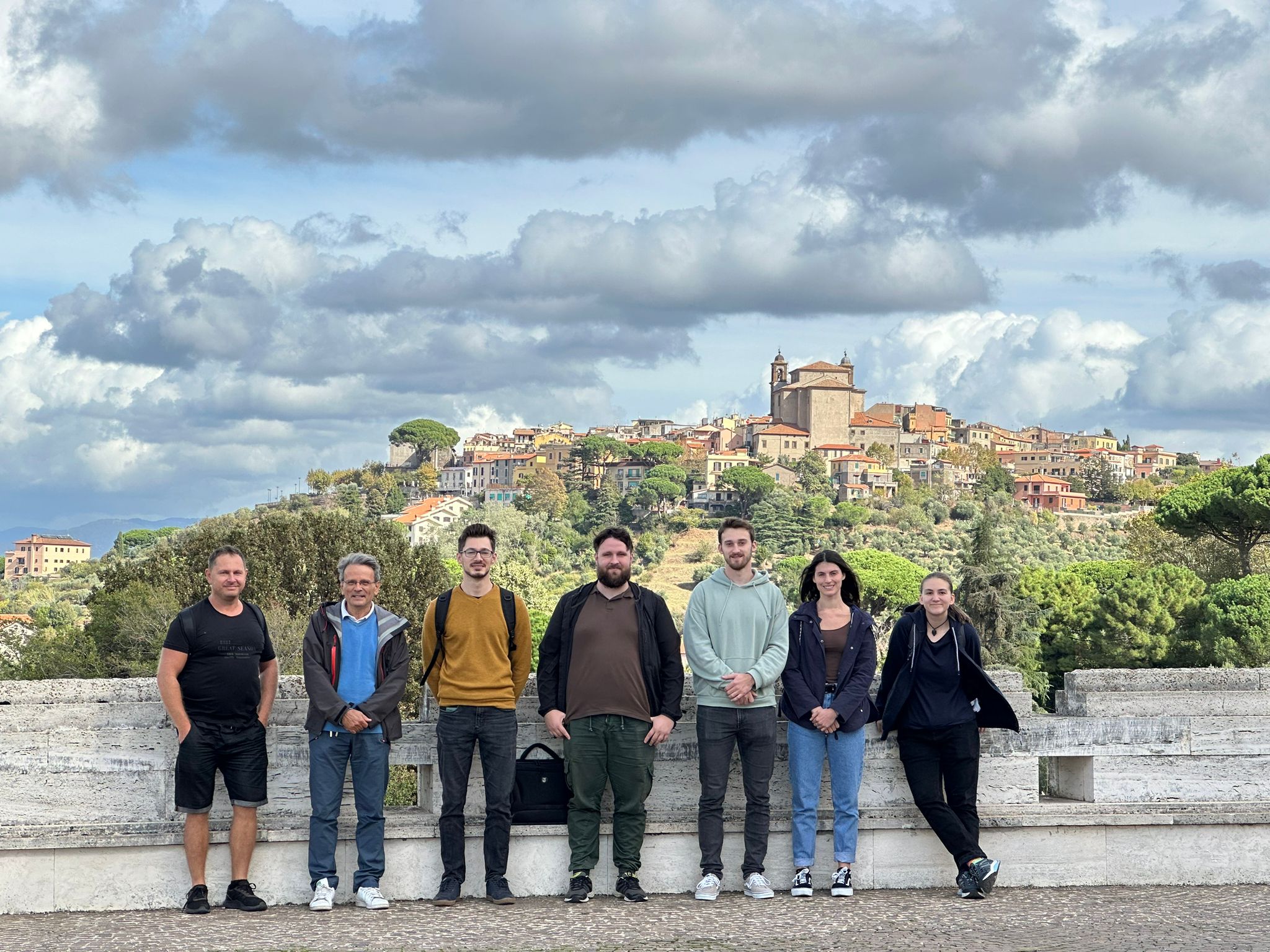
During the two weeks of their stay, our students had the opportunity to present their own scientific results in English, drawn from their already completed bachelor or master theses. They were rewarded with constructive criticism from Prof. Luigi Stella, who evaluated their scientific results as well as the level of presentation of our students.
In July 2023, Andrea Kotrlová attended online the 2023 Sagan Exoplanet Summer Hybrid Workshop hosted by the NASA Exoplanet Science Institute (NExScI) at the California Institute of Technology in Pasadena, USA. The Sagan Summer Workshops are held annually in late July. This year’s workshop was held in a hybrid form and was focused on characterizing exoplanet atmospheres. The field is entering a revolution in our understanding of exoplanet atmospheres thanks to measurements from the ground, from space, and particularly from the new JWST – the superlative facility for exoplanet studies. Such observations will also be essential for seeking signs of biosignature gasses in nearby exoplanets using future, next-generation observatories.
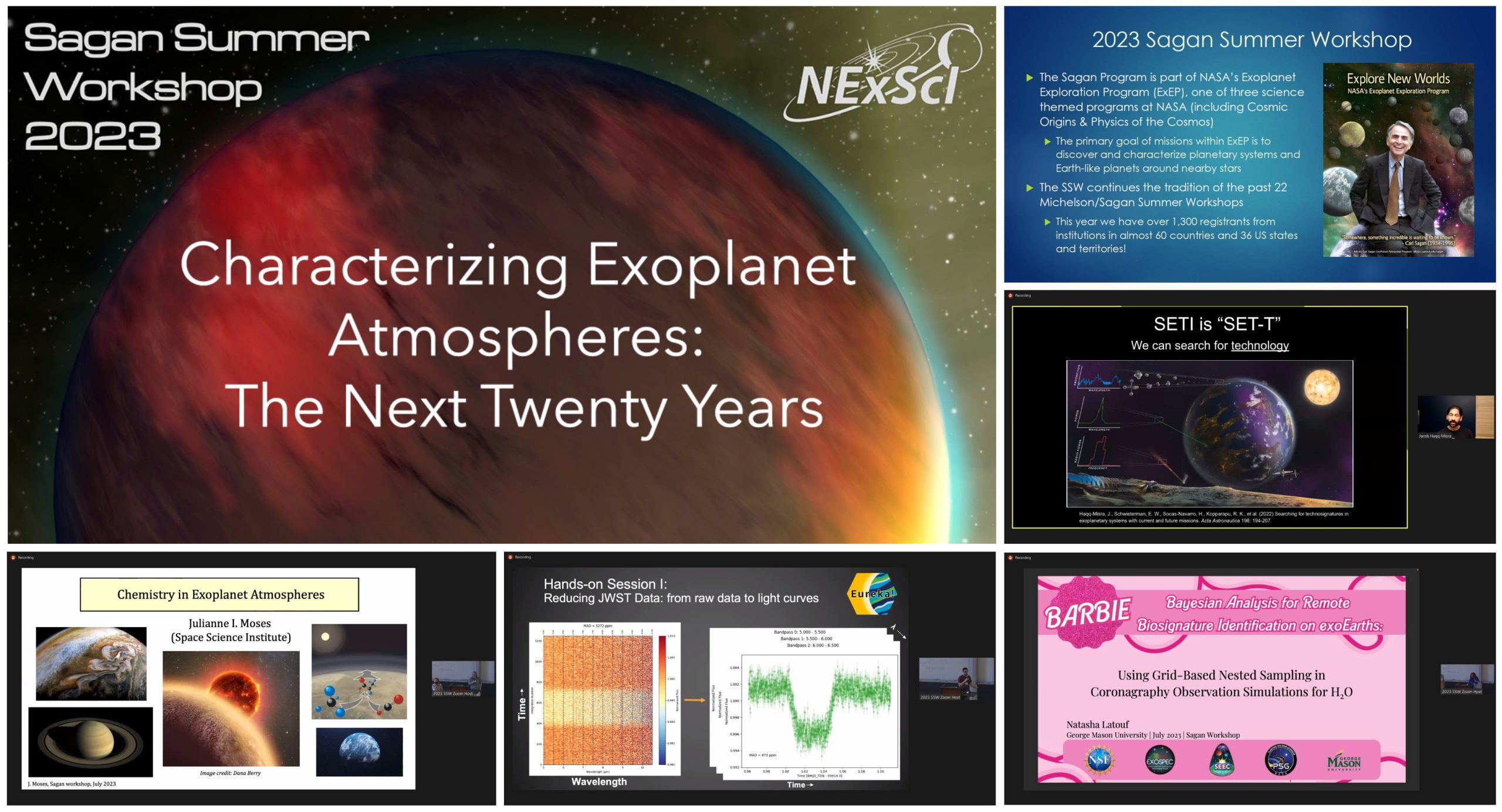
The workshop included lecture presentations given by leading experts in the field, a panel discussion, hands-on data modeling sessions using either Jupyter notebooks or Google’s Colaboratory (Colab) tool, poster sessions, and the opportunity to meet with the speakers. The Slack channel was set up for interactive discussions, and the Gather Town platform enabled people to meet informally and virtually. A record number of more than 850 participants from 57 countries joined this workshop in person or virtually. Agenda of the workshop with links to the slides and recordings of the presentations is available here and the group photo here. All the workshop videos are now posted online on the Sagan Summer Workshop YouTube channel.
The Institute of Physics of the Silesian University in Opava hosted in June 2023 an international workshop entitled Disks, Tori, Spheres: Accretion onto Compact Objects. This prestigious event presented the scientific works of leading experts focused on accretion disks, general relativity and compact objects. The workshop attracted 14 foreign experts, who presented the latest research and findings in their areas of expertise. The discussion and exchange of views between the speakers and the participants contributed to an intensive scientific dialogue. The audience of the workshop also included students and academic staff of the Silesian University in Opava, who had the opportunity to gain valuable knowledge and inspiration from internationally recognized experts.
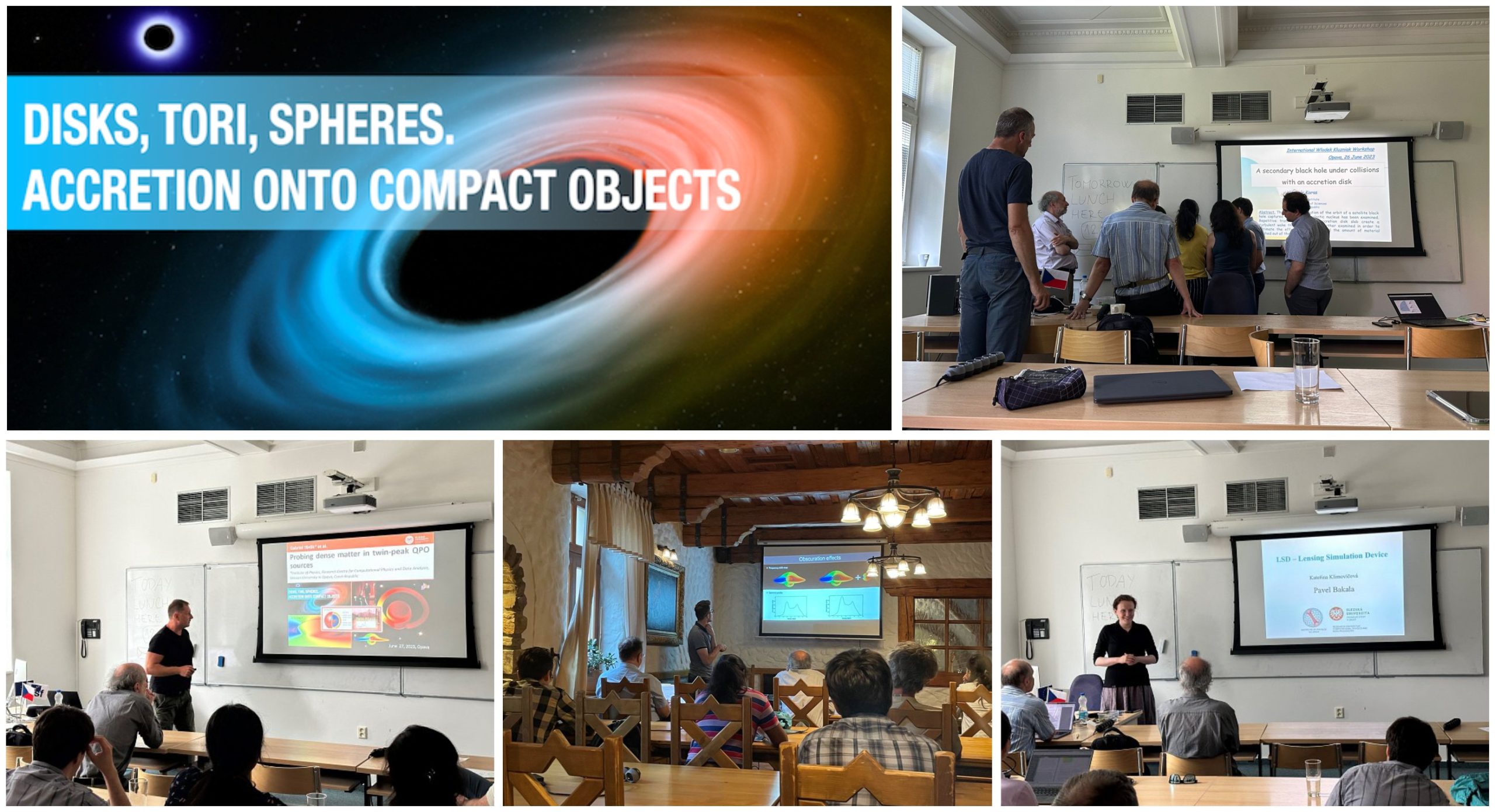
This workshop was organized on the premises of the Mathematical Institute in Opava and a UNI-SPACE LAB with a financial support by the EU project Development of Research Capacities of the Silesian University in Opava, under a registration number CZ.02.2.69/0.0/0.0/18_054/0014696.
Our Contributions
In May 2023, Gabriel Török, Eva Šrámková, Kateřina Klimovičová, Debora Lančová, Monika Matuszková and René Šprňa participated in the 17th INTEGRAL/BART Workshop (IBWS) that was held in Karlovy Vary, Czech Republic. IBWS is a series of successful international workshops dedicated to all aspects of high energy astrophysics and supporting ground-based experiments. The IBWS workshops promote regional collaboration in galactic and extragalactic high-energy astrophysics, both experimental as well as theoretical, with an emphasis on the interface between satellite projects (including small satellites and CubeSats) and ground-based experiments (e.g. robotic telescopes).
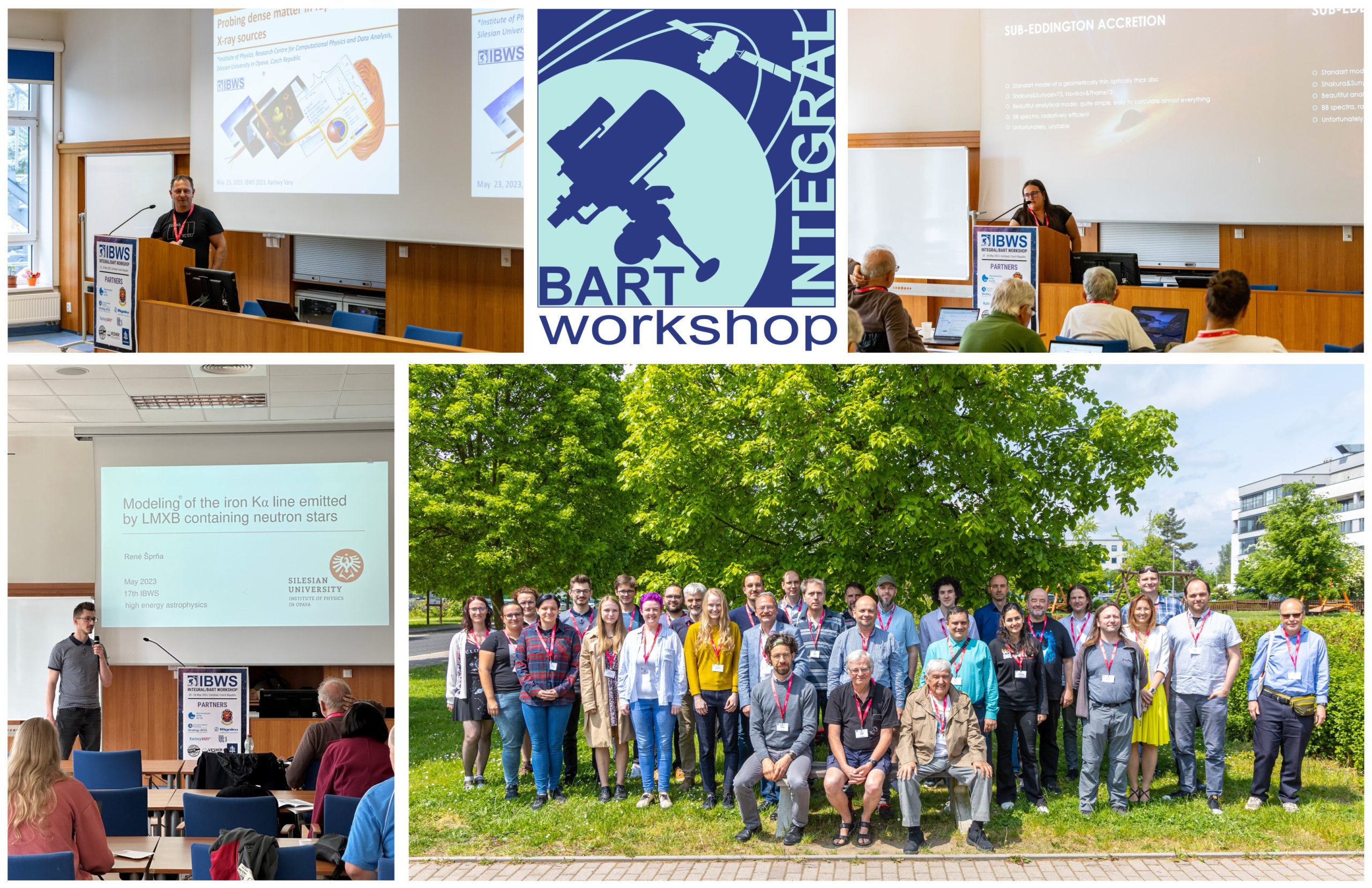
Our Contributions
During the academic year 2022-2023, Andrea Kotrlová attended the second edition of the EAI Academy, an international educational program organized and broadcasted by the Centro de Astrobiología (CAB, CSIC-INTA), Madrid, with the support of the European Astrobiology Institute (EAI). It provided a framework to meet online with the European astrobiology community and to acquire interdisciplinary knowledge through a series of seminars given by experts in these fields.
This year, the EAI Academy consisted of a series of 16 online seminars related to astrobiology and focused on four topics: Extreme environments on Earth, Lab simulations of planet and satellite atmospheres, Missions to explore exoplanets, and Mars Sample Return. The seminars were offered for free and were streamed online via Zoom every two weeks from October 2022 to May 2023. Each session included a 30-40 minute didactic talk given by a world-renowned expert. The talk was followed by about 20 minutes of questions and answers.
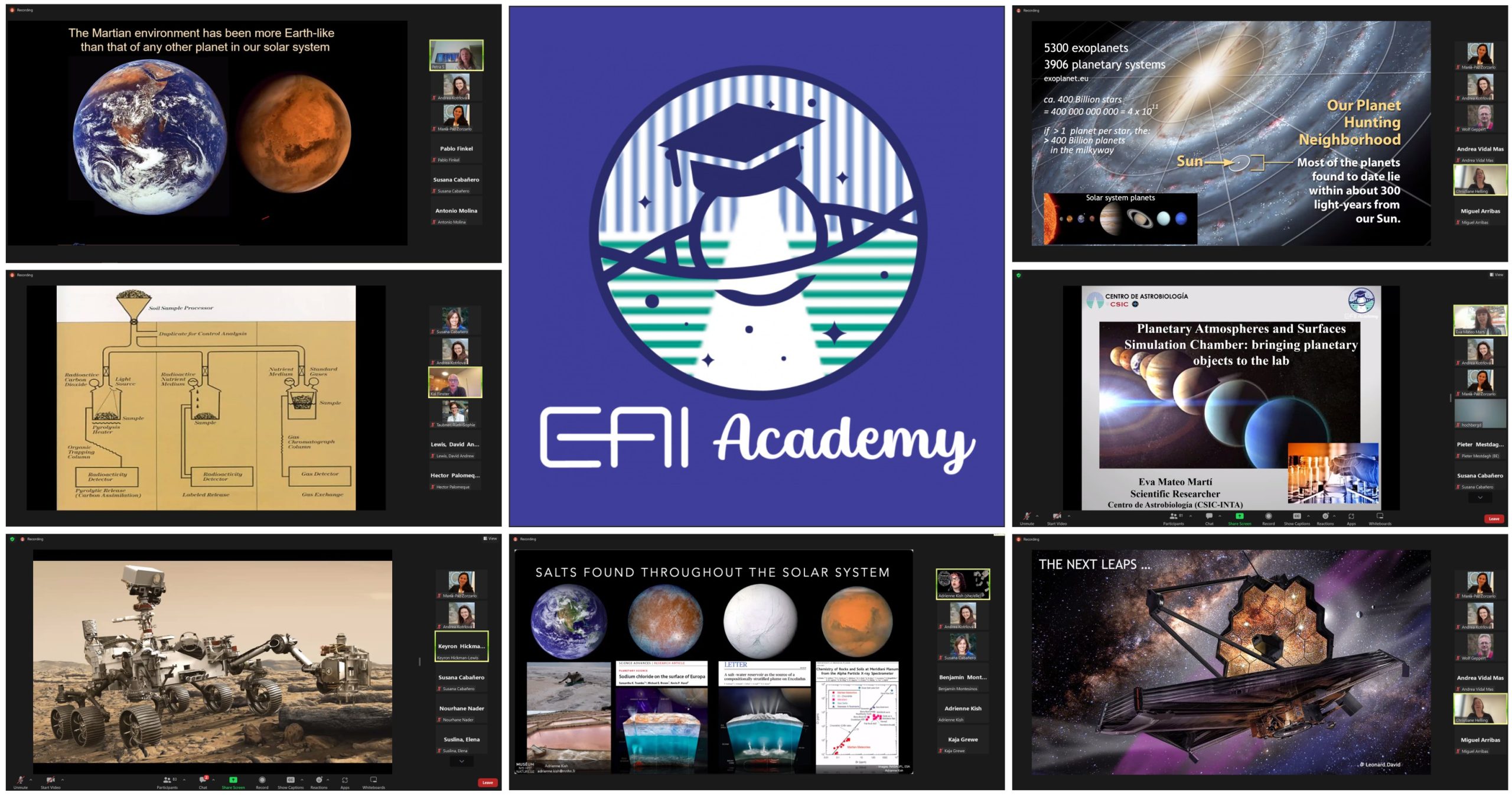
All seminars have been recorded and are available on the CAB YouTube channel and the EAI YouTube channel. List of all speakers and abstracts with links to recorded lectures can be found here. The program will be relaunched in September 2023 for the next academic year.
In March 2023, Debora Lančová, Zuzana Turoňová and Vladimír Karas participated in the 20th Divisional Meeting of the High Energy Astrophysics Division (HEAD) of the American Astronomical Society (AAS). It was the biggest HEAD meeting in history and was held in Waikōloa, Hawaiʻi at the Hilton Waikōloa Village. The AAS High Energy Astrophysics Division (HEAD), established in 1969, assists and promotes the advancement of research and the dissemination of knowledge about high energy events, particles, quanta, relativistic gravitational fields, and related phenomena in the astrophysical universe. HEAD also promotes the coordination of this research and knowledge with other branches of science.
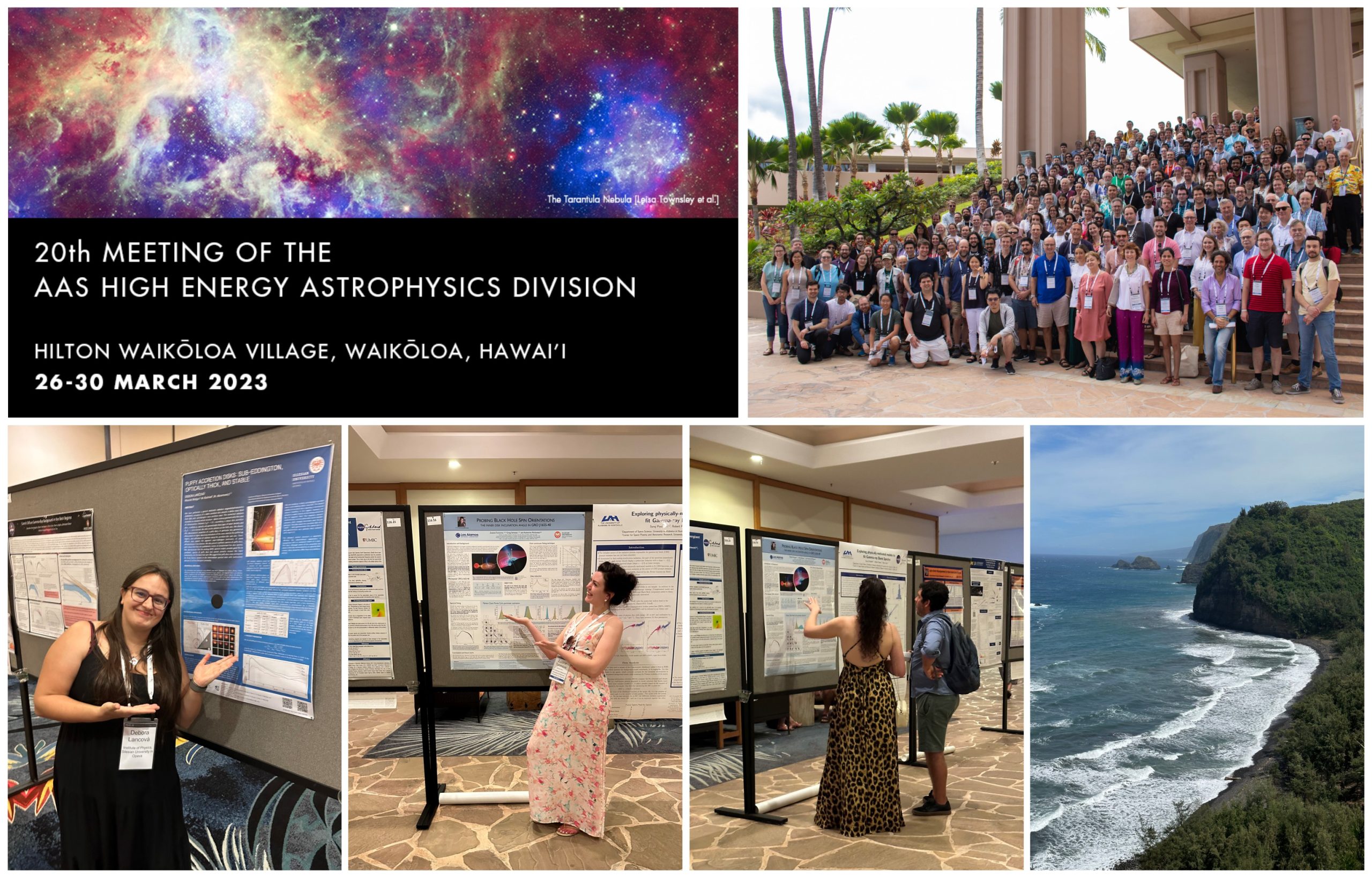
HEAD holds Division Meetings every 18 months, as well as sessions within the meetings of the AAS. The main topics of this year’s meeting included high-energy astrophysics, stellar and compact objects, black holes, AGN, gamma-ray astronomy in the context of time-domain and multimessenger science, interstellar medium, galaxies, galaxy clusters, X-ray polarimetry results, missions and instruments.
Our Contributions
In March 2023, Eva Šrámková participated in the Conference of the South African Gravity Society (SAGS 2023), hosted by the Astrophysics Research Centre at the University of KwaZulu-Natal (UKZN) in South Africa.
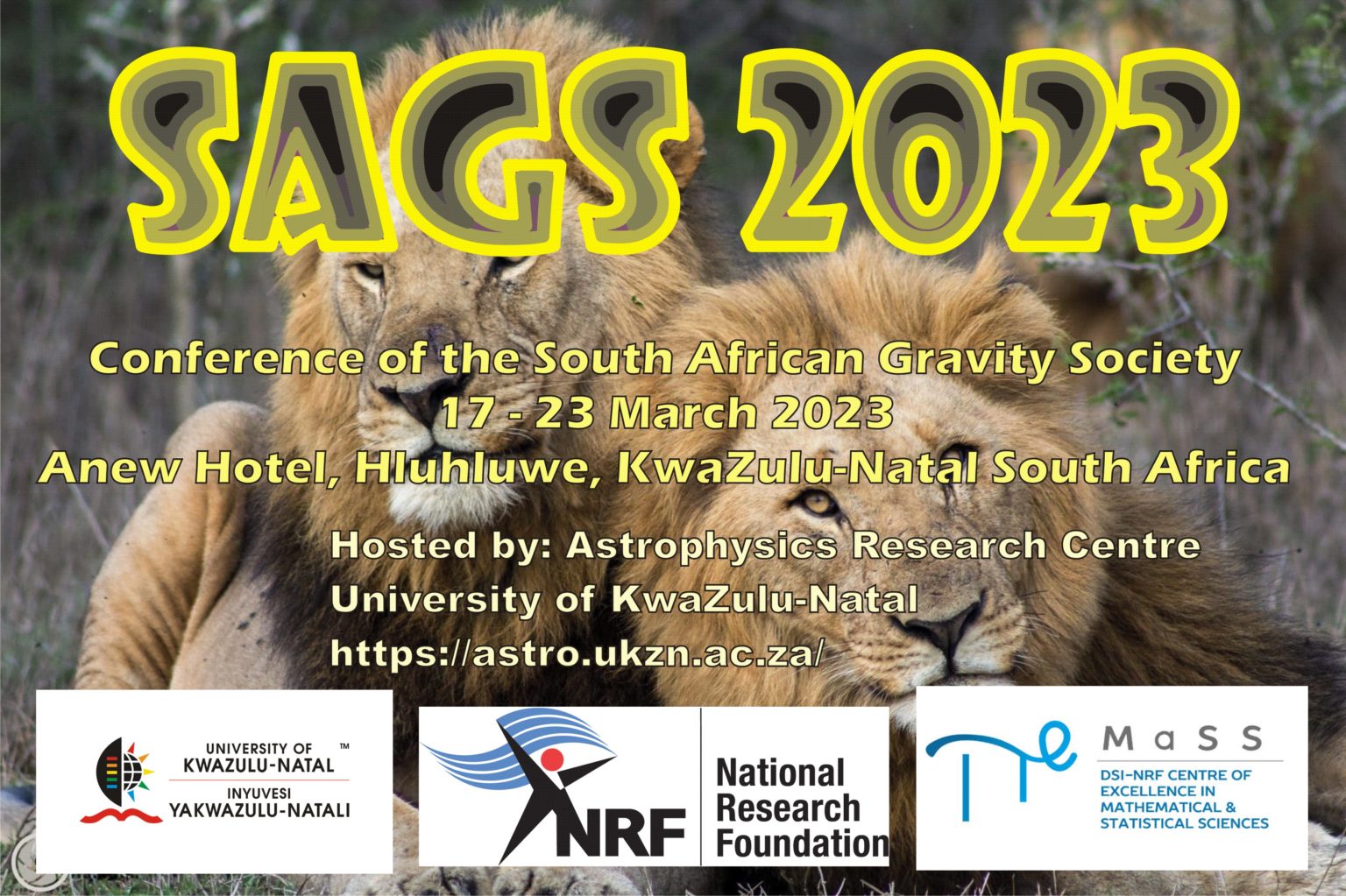
The main purpose of this conference was to consider present and future research directions in gravity theories and a variety of related applications in astrophysics and cosmology. The conference was attended by many leading experts in the field (e.g., Naresh Dadhich or Christian Böhmer) and allowed for many valuable discussions and interactions between the participants, who had plenty of opportunity to reflect and interact on common research problems.
Our Contributions
In January 2023, Eva Šrámková and Debora Lančová participated in the Timescales in Astrophysics Conference held in the New York University Abu Dhabi (NYUAD) in United Arab Emirates. The conference was organized by the newly established CAP3 (Center for Astro, Particle, and Planetary Physics) of the NYUAD physics department.
The conference was focused on determining the state of the art in measuring astrophysical ages and time scales, discussing conflicts in current astrophysical ages and time scales from solar system formation timescales through the age of the Universe, and assessing where greater age precision is most needed. The conference also covered topics such as the concept of time in philosophy and science, timescales and major astrophysical processes around compact objects, BHs, neutron stars, FRBs, XRBs, gravitational waves, neutrinos, helioseismology, asteroseismology, planetary formation & dynamics, GMCs, star formation, AGNs and TDEs, WDs, SNe, optical transients, Galactic phenomena, gas and star formation quenching in galaxies, galaxy dynamics, secular evolution, galaxy evolution, reionization, and cosmology.

Our Contributions